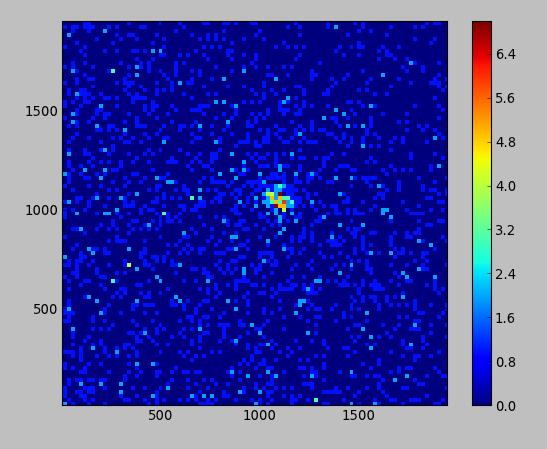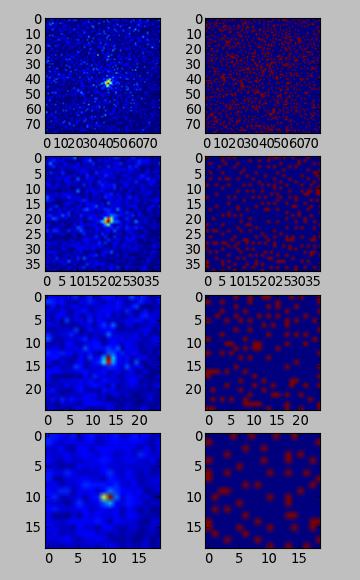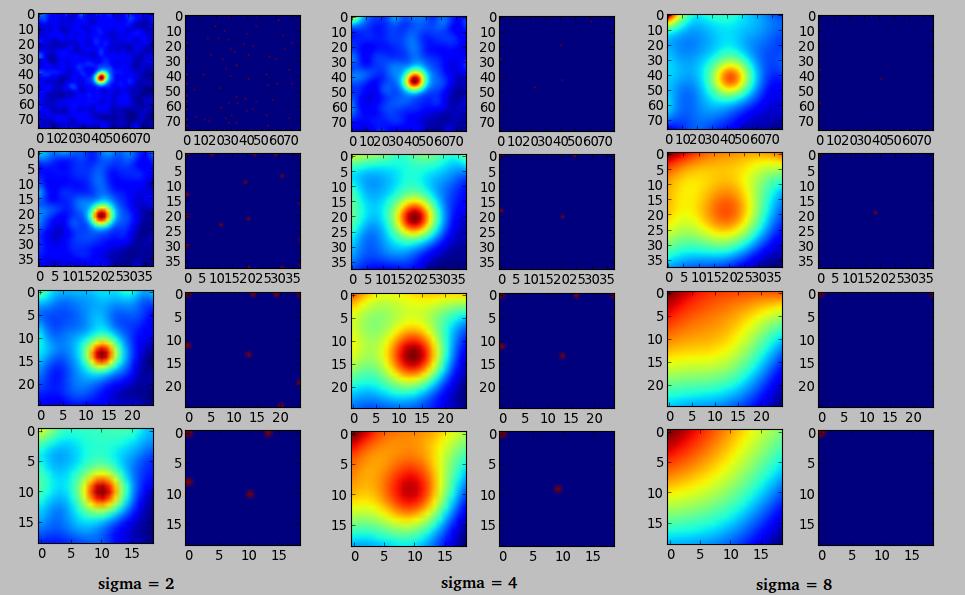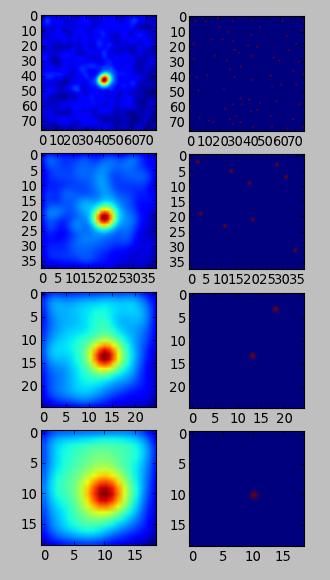I'm trying to get python to return, as close as possible, the center of the most obvious clustering in an image like the one below:

In my previous question I asked how to get the global maximum and the local maximums of a 2d array, and the answers given worked perfectly. The issue is that the center estimation I can get by averaging the global maximum obtained with different bin sizes is always slightly off than the one I would set by eye, because I'm only accounting for the biggest bin instead of a group of biggest bins (like one does by eye).
I tried adapting the answer to this question to my problem, but it turns out my image is too noisy for that algorithm to work. Here's my code implementing that answer:
import numpy as np
from scipy.ndimage.filters import maximum_filter
from scipy.ndimage.morphology import generate_binary_structure, binary_erosion
import matplotlib.pyplot as pp
from os import getcwd
from os.path import join, realpath, dirname
# Save path to dir where this code exists.
mypath = realpath(join(getcwd(), dirname(__file__)))
myfile = 'data_file.dat'
x, y = np.loadtxt(join(mypath,myfile), usecols=(1, 2), unpack=True)
xmin, xmax = min(x), max(x)
ymin, ymax = min(y), max(y)
rang = [[xmin, xmax], [ymin, ymax]]
paws = []
for d_b in range(25, 110, 25):
# Number of bins in x,y given the bin width 'd_b'
binsxy = [int((xmax - xmin) / d_b), int((ymax - ymin) / d_b)]
H, xedges, yedges = np.histogram2d(x, y, range=rang, bins=binsxy)
paws.append(H)
def detect_peaks(image):
"""
Takes an image and detect the peaks usingthe local maximum filter.
Returns a boolean mask of the peaks (i.e. 1 when
the pixel's value is the neighborhood maximum, 0 otherwise)
"""
# define an 8-connected neighborhood
neighborhood = generate_binary_structure(2,2)
#apply the local maximum filter; all pixel of maximal value
#in their neighborhood are set to 1
local_max = maximum_filter(image, footprint=neighborhood)==image
#local_max is a mask that contains the peaks we are
#looking for, but also the background.
#In order to isolate the peaks we must remove the background from the mask.
#we create the mask of the background
background = (image==0)
#a little technicality: we must erode the background in order to
#successfully subtract it form local_max, otherwise a line will
#appear along the background border (artifact of the local maximum filter)
eroded_background = binary_erosion(background, structure=neighborhood, border_value=1)
#we obtain the final mask, containing only peaks,
#by removing the background from the local_max mask
detected_peaks = local_max - eroded_background
return detected_peaks
#applying the detection and plotting results
for i, paw in enumerate(paws):
detected_peaks = detect_peaks(paw)
pp.subplot(4,2,(2*i+1))
pp.imshow(paw)
pp.subplot(4,2,(2*i+2) )
pp.imshow(detected_peaks)
pp.show()
and here's the result of that (varying the bin size):

Clearly my background is too noisy for that algorithm to work, so the question is: how can I make that algorithm less sensitive? If an alternative solution exists then please let me know.
EDIT
Following Bi Rico advise I attempted smoothing my 2d array before passing it on to the local maximum finder, like so:
H, xedges, yedges = np.histogram2d(x, y, range=rang, bins=binsxy)
H1 = gaussian_filter(H, 2, mode='nearest')
paws.append(H1)
These were the results with a sigma of 2, 4 and 8:

EDIT 2
A mode ='constant' seems to work much better than nearest. It converges to the right center with a sigma=2 for the largest bin size:

So, how do I get the coordinates of the maximum that shows in the last image?






 已为社区贡献126445条内容
已为社区贡献126445条内容

所有评论(0)